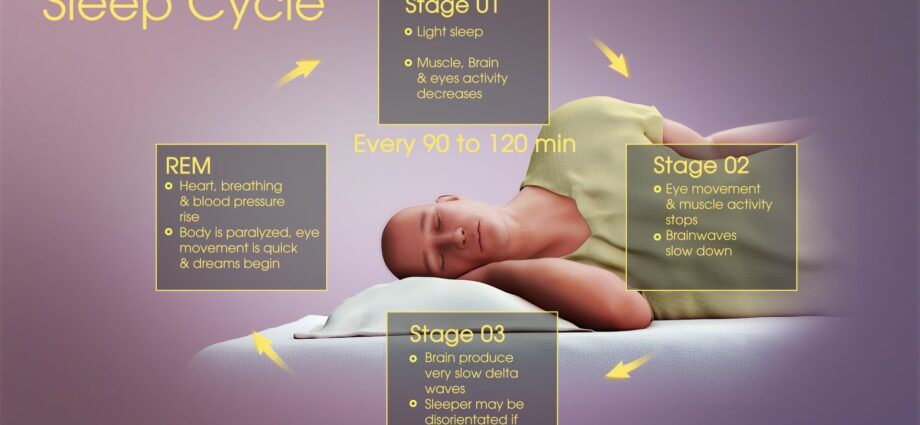Contents
A phase of the sleep cycle
Like light slow sleep or deep sleep, REM sleep is one of the phases of the sleep cycle. In adults, it follows slow sleep, and is the last stage of a sleep cycle.
In a healthy adult with no sleep problem, the duration of REM sleep takes about 20 to 25% of the duration of a night, and increases with each cycle until awakening.
REM sleep, or restless sleep: definition
We speak of “paradoxical” sleep because the person sleeps deeply, and yet he manifests what can be likened to signs of awakening. Brain activity is intense. Breathing quickens compared to previous phases of sleep, and the heartbeat can also be irregular. The body is inert (we speak of muscle atony because the muscles are paralyzed), but jerky movements may occur. An erection can occur, both in men (penis) and in women (clitoris), both in babies and in the elderly.
A type of sleep conducive to dreams
Note that if we can have dreams during all stages of sleep, REM sleep is particularly conducive to dreams. During REM sleep, dreams are particularly frequent, but also particularly intense, restless. They would also be the dreams that we remember the most when we wake up.
Why it’s also called the Sleep Rapid Eye Movement, or REM
In addition to the apparent agitation of the sleeper, REM sleep is recognized by the presence of rapid eye movements. The eyes move behind the eyelids. This is also why our English neighbors call this stage of sleep the REM: “Rapid eye movement”. The face can also clearly express an emotion, whether it is anger, joy, sadness or even fear.
The evolution of paradoxical sleep in babies
REM sleep change place within the sleep cycle between birth and childhood, and its duration is also changing. Indeed, at birth, a toddler’s sleep includes only two phases, in addition to falling asleep: restless sleep, future REM sleep, which comes first and affects 60% of the cycle, and slow, or calm, sleep. A cycle then lasts 40 to 60 minutes.
From about 3 months, restless sleep transforms into paradoxical sleep, but retains its first place in the sleep train. It is then followed by light slow sleep, then by deep slow sleep. It is then only around the age of 9 months that REM sleep is positioned last in the sleep cycle, after light slow sleep and deep slow sleep. At six months, REM sleep only represents 35% of the sleep cycle, and at 9 months, it completely disappears from daytime sleep (naps) and only accounts for 20% of nighttime sleep, as in adults. .
And, as in adults, REM sleep in babies and children is characterized by a restless state while the body is amorphous. During this phase of sleep, the baby can even reproduce the six basic emotions of sadness, joy, fear, anger, surprise or disgust. Even if baby seems to be having a hard time, better do not wake him up, for in truth he sleeps soundly.
Paradoxical sleep: a role to be clarified
Although we know more and more things about sleep and its different phases, in particular thanks to new technologies in the field of medical imaging, paradoxical sleep is still very mysterious. Its role is still unclear. If the memorization processes are rather slow sleep, REM sleep could also play a role in memory and in brain maturation, especially because it is an important part of the infant’s sleep cycle. According to Inserm, experiments on rats have shown that the suppression of this phase of sleep leads to disturbances in the architecture of the brain.
REM sleep could therefore be important for memory consolidation, but also for creativity and problem solving.










